11 Best Herbal Tinctures For Aging
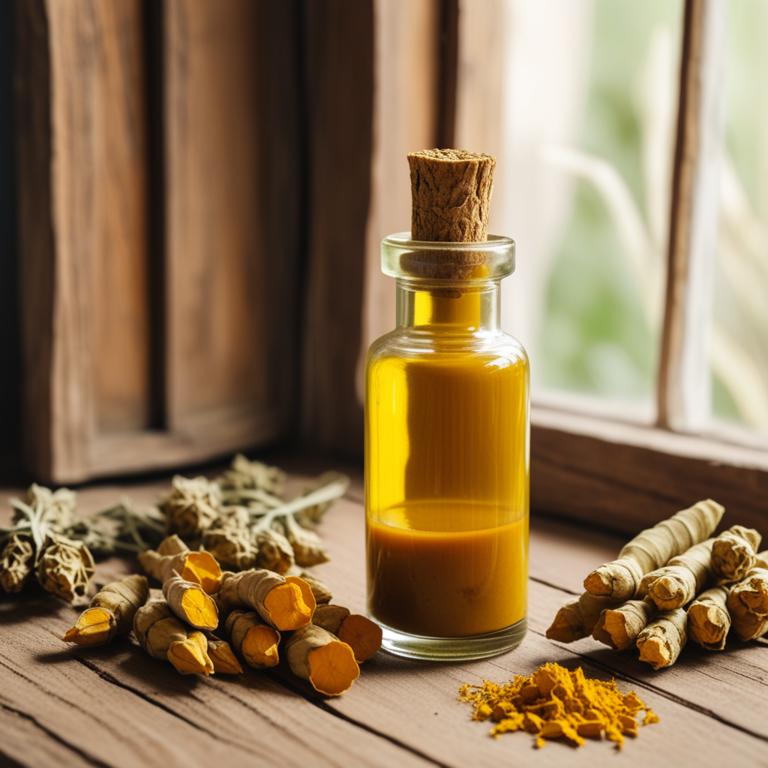
Herbal tinctures for Aging are a concentrated liquid extract made from herbs and plants that have been used for centuries to promote vitality and combat age-related symptoms.
These tinctures are made by steeping herbs in a solvent, such as glycerin or ethanol, which extracts their active compounds, resulting in a potent remedy.
The benefits of using herbal tinctures for aging include improved cognitive function, increased energy, and enhanced overall well-being, as seen in tinctures made from Ginkgo Biloba, Ashwagandha, and Bacopa Monnieri, which support brain health and memory.
Additionally, tinctures like Rhodiola, Ginseng, and Maca root have been used to reduce stress, boost mood, and improve libido, while others like Turmeric and Ginger have anti-inflammatory properties that may alleviate joint pain and improve digestion.
According to the study on the antiaging potential of Ayurvedic herbs, tinctures for aging can be created using plants with natural bioactive agents that enhance gene longevity, telomerase activity, and ROS scavenging, potentially delaying the aging process in humans.
Below there's a list of the 11 best herbal tinctures for aging.
- 1. Ginkgo biloba tinctures
- 2. Panax quinquefolius tinctures
- 3. Curcuma longa tinctures
- 4. Panax ginseng tinctures
- 5. Withania somnifera tinctures
- 6. Astragalus membranaceus tinctures
- 7. Silybum marianum tinctures
- 8. Bacopa monnieri tinctures
- 9. Eleutherococcus senticosus tinctures
- 10. Glycyrrhiza glabra tinctures
- 11. Centella asiatica tinctures
Also you may be interested in...
TODAY'S FREE BOUNDLE
Herb Drying Checklist + Herbal Tea Shopping List + Medicinal Herbs Flashcards
Enter you best email address below to receive this bundle (3 product valued $19.95) for FREE + exclusive access to The Aphotecary Letter.
$19.95 -> $0.00
1. Ginkgo biloba tinctures

Ginkgo biloba tinctures have been traditionally used to treat age-related ailments due to their antioxidant, anti-inflammatory, and vasodilatory properties.
The bioactive constituents, including flavonoids and terpenoids, help to improve blood circulation, reduce oxidative stress, and enhance cognitive function, which can alleviate symptoms of aging.
The benefits of using Ginkgo biloba tinctures include improved memory and focus, enhanced mood, and increased energy levels, making it a popular natural remedy for age-related decline.
By promoting healthy blood flow and reducing oxidative damage, Ginkgo biloba tinctures may help to slow down the aging process and improve overall quality of life.
Related Study
According to "Presse medicale (Paris, France : 1983)", Ginkgo biloba tinctures for aging were found to be effective against cerebral disorders due to ageing, with significant improvements observed as early as 3 months and increasing over the following months.
2. Panax quinquefolius tinctures
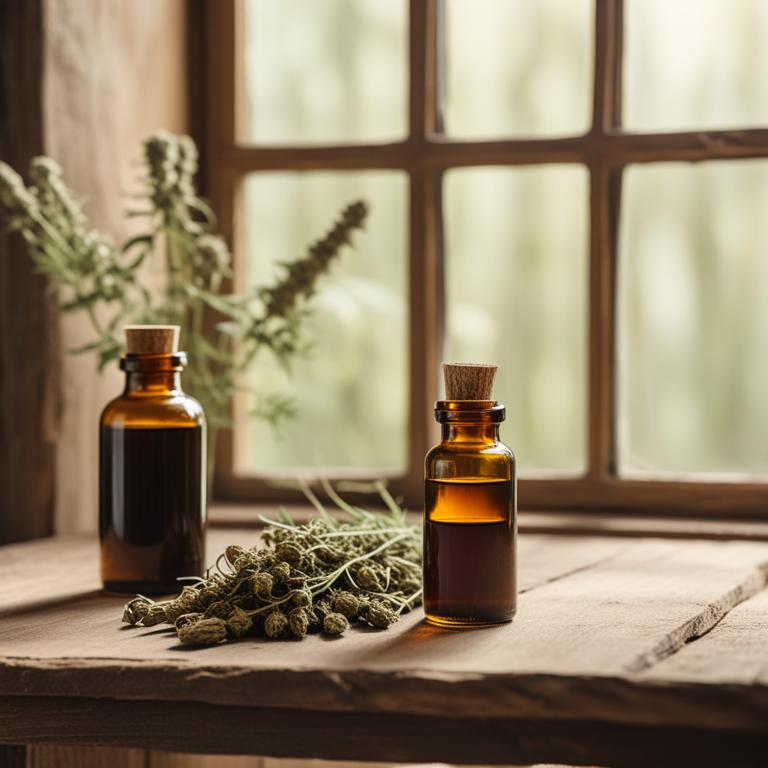
Panax quinquefolius tinctures, derived from the American ginseng plant, have been traditionally used to treat the aging ailment due to their adaptogenic and anti-inflammatory properties.
Ginsenosides, a bioactive constituent of Panax quinquefolius, help to improve cognitive function and reduce oxidative stress, thereby alleviating symptoms of aging such as memory loss and fatigue.
The ginsenosides present in this herbal preparation also exhibit antioxidant and anti-apoptotic effects, which contribute to its ability to promote healthy aging and reduce the risk of age-related diseases.
By incorporating Panax quinquefolius tinctures into one's regimen, individuals can potentially experience improved physical and mental well-being, enhanced resilience to stress, and a reduced risk of age-related complications.
Related Study
According to "Journal of cachexia, sarcopenia and muscle", Panax quinquefolius tinctures, which contain ginseng, a plant-derived natural product, have been reported to have substantial beneficial effects on sarcopenia, including increased muscle mass, strength, and physical performance, with no significant side effects.
3. Curcuma longa tinctures

Curcuma longa tinctures have been traditionally used to treat the aging ailment due to their potent antioxidant and anti-inflammatory properties, which help to combat the free radical damage and oxidative stress associated with aging.
This herbal preparation contains bioactive constituents such as curcumin, demethoxycurcumin, and bisdemethoxycurcumin, which have been shown to have anti-aging effects by promoting collagen synthesis, reducing wrinkles, and improving skin elasticity.
The tincture of Curcuma longa helps to treat the aging ailment by reducing the visible signs of aging, such as age spots, fine lines, and wrinkles, and improving overall skin health.
The benefits of using Curcuma longa tinctures to treat the aging ailment include improved skin texture, reduced inflammation, and enhanced antioxidant defense, resulting in a more youthful and radiant appearance.
Related Study
According to "Pharmaceuticals (Basel, Switzerland)", Curcuma longa tinctures for aging show potential for the development of anti-aging solutions, having received the most extensive research among the five medicinal plants traditionally used by the Anak Dalam tribe in Jambi, Indonesia.
4. Panax ginseng tinctures
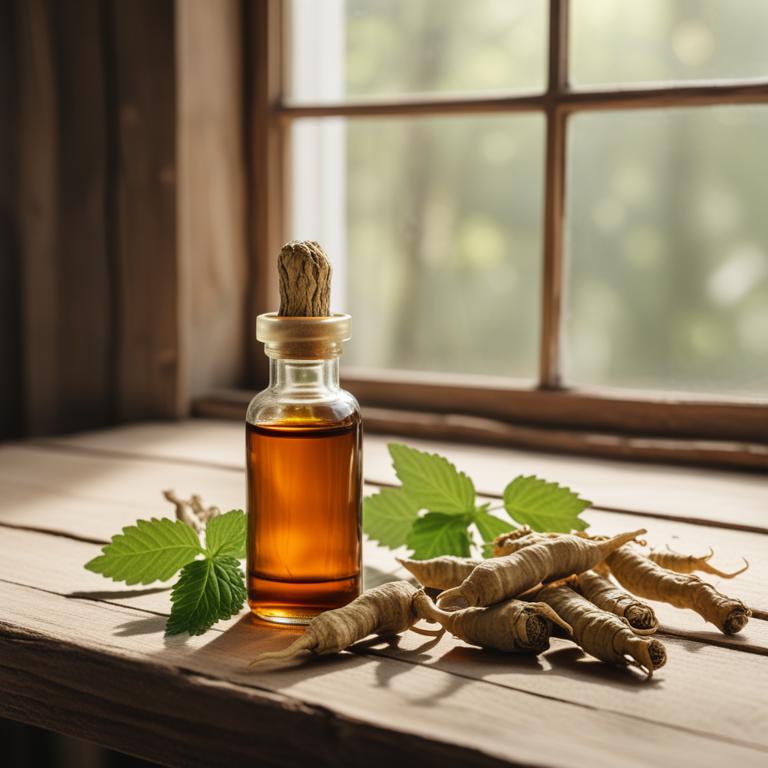
Panax ginseng tinctures are a traditional herbal preparation used to treat various aging ailments, including fatigue, low energy, and cognitive decline.
The properties of Panax ginseng tinctures, including its adaptogenic and antioxidant properties, help to treat these conditions by promoting overall health and well-being.
The bioactive constituents of Panax ginseng tinctures, such as ginsenosides and saponins, play a crucial role in treating aging ailments by enhancing cellular energy production, improving cognitive function, and reducing oxidative stress.
The benefits of using Panax ginseng tinctures to treat aging ailments include improved physical and mental performance, enhanced quality of life, and a reduced risk of age-related diseases.
Related Study
According to the scientific study, Panax ginseng tinctures may contribute towards maintaining optimal oxidative status against certain chronic disease states and aging.
5. Withania somnifera tinctures
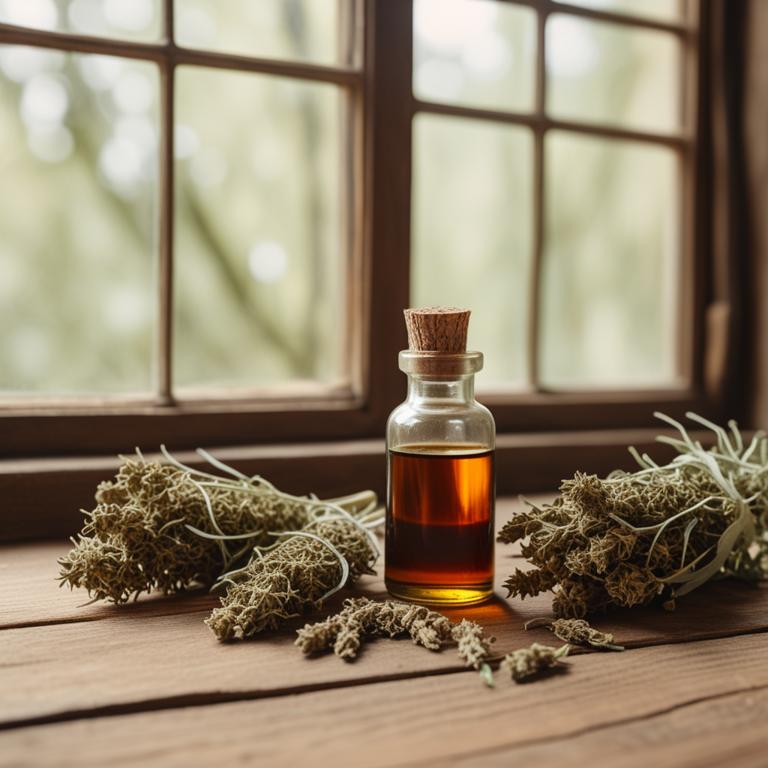
Withania somnifera tinctures have been traditionally used to treat the aging ailment, also known as senescence, which is characterized by the decline of physical and mental functions.
The tinctures possess adaptogenic properties, which enable the body to adapt to stress and promote overall well-being, thus helping to alleviate the symptoms associated with aging.
The bioactive constituents of Withania somnifera tinctures, including withanolides and glycosides, are responsible for their therapeutic effects, which include antioxidant, anti-inflammatory, and immunomodulatory activities.
The benefits of using Withania somnifera tinctures to treat the aging ailment include improved cognitive function, increased energy levels, and enhanced physical performance, ultimately contributing to a longer and healthier life.
Related Study
According to "Experimental gerontology", Withania somnifera tinctures for aging may have potential therapeutic benefits, including improving healthspan, delaying age-associated physiological changes, and extending lifespan, as well as providing neuroprotective benefits and alleviating symptoms of age-related disorders such as Alzheimer's and Parkinson's disease.
6. Astragalus membranaceus tinctures

Astragalus membranaceus tinctures are a herbal preparation used to treat the aging ailment, also known as senescence, by utilizing its adaptogenic properties to help the body adapt to stress and promote overall well-being.
This tincture helps to treat the aging ailment by improving immune function, reducing oxidative stress, and enhancing cellular vitality, ultimately leading to a healthier and more youthful appearance.
The bioactive constituents of Astragalus membranaceus, including flavonoids, saponins, and polysaccharides, play a crucial role in its anti-aging effects by modulating cellular signaling pathways and protecting against cellular damage.
The benefits of using Astragalus membranaceus tinctures to treat the aging ailment include improved skin health, enhanced cognitive function, and increased energy levels, resulting in a more vibrant and youthful appearance.
Related Study
According to "Frontiers in nutrition", Astragalus membranaceus tinctures for aging have been found to exhibit anti-aging activity in rats by decreasing malondialdehyde content and increasing superoxide dismutase activity.
7. Silybum marianum tinctures

Silybum marianum tinctures have been traditionally used to treat the aging ailment, also known as senile or age-related cognitive decline.
The herbal preparation's anti-inflammatory, antioxidant, and adaptogenic properties help to treat this ailment by reducing oxidative stress, improving brain function, and promoting overall well-being.
The bioactive constituents of Silybum marianum, including silymarin and flavonoids, have been shown to scavenge free radicals, protect neurons from damage, and enhance cognitive function.
Regular use of Silybum marianum tinctures may help to improve memory, cognitive clarity, and overall quality of life in individuals experiencing age-related cognitive decline.
Related Study
According to "Journal de pharmacie de Belgique", Silybum marianum tinctures, which contain silymarine, a mixture of flavonolignanes with antioxidant properties, have shown preventive and curative activity in cases of liver damage, potentially benefiting patients with liver issues associated with aging.
8. Bacopa monnieri tinctures
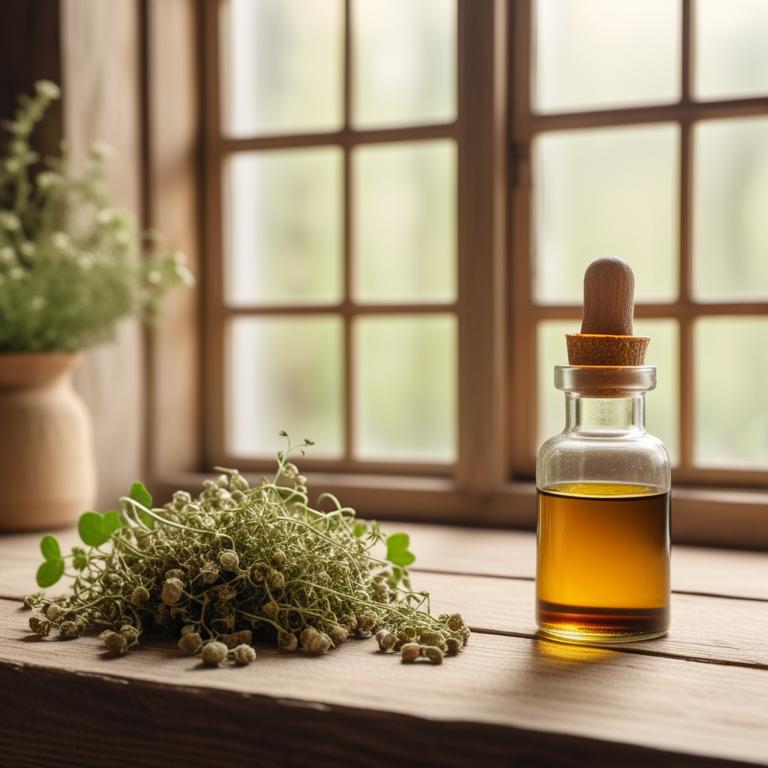
Bacopa monnieri tinctures have been traditionally used to treat the aging ailment, also known as cognitive decline or neurodegenerative diseases.
The herbal preparation's properties, such as antioxidant and anti-inflammatory activities, help to protect the brain cells from oxidative stress and inflammation, thereby slowing down the aging process.
The bioactive constituents, including bacosides A and B, bacopaside I and II, and brahmanoside, have been found to improve memory, learning, and cognitive function by enhancing the production of neurotransmitters and neurotrophic factors, such as acetylcholine and brain-derived neurotrophic factor (BDNF).
By using Bacopa monnieri tinctures, individuals may experience benefits such as improved memory, enhanced cognitive function, and reduced risk of age-related neurodegenerative diseases.
Related Study
According to "Evidence-based complementary and alternative medicine : eCAM", Bacopa monnieri tinctures for aging is not explicitly mentioned in the provided study, but it is mentioned as a popular Ayurvedic medicinal plant used to slow down brain aging and enhance memory.
9. Eleutherococcus senticosus tinctures
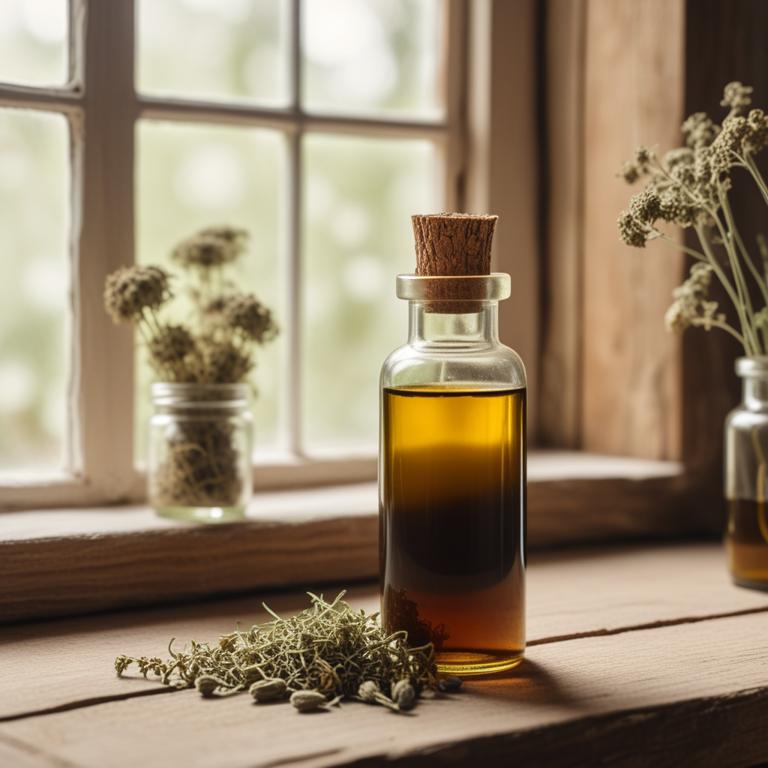
Eleutherococcus senticosus tinctures have been used to treat the aging ailment, also known as senescence, due to their adaptogenic properties that help the body to adapt to stress and promote overall well-being.
The eleutheroside B and other bioactive constituents in this herbal preparation help to improve physical and mental performance, increase vitality, and enhance the body's natural defenses against aging.
By stimulating the production of antioxidants and other protective compounds, Eleutherococcus senticosus tinctures help to mitigate the effects of oxidative stress and inflammation associated with aging, thereby promoting healthy aging and longevity.
The benefits of using Eleutherococcus senticosus tinctures to treat the aging ailment include improved physical and mental function, increased energy levels, and enhanced overall quality of life.
10. Glycyrrhiza glabra tinctures

Glycyrrhiza glabra tinctures, derived from the roots of the licorice plant, have been used to treat various aging-related ailments due to their anti-inflammatory and antioxidant properties.
The tinctures help to treat the aging ailment by reducing oxidative stress and promoting collagen production, thereby improving skin elasticity and reducing fine lines and wrinkles.
The bioactive constituents of Glycyrrhiza glabra, including glycyrrhizin, flavonoids, and saponins, play a crucial role in its therapeutic effects by inhibiting the production of pro-inflammatory enzymes and free radicals.
The benefits of using Glycyrrhiza glabra tinctures to treat the aging ailment include improved skin health, reduced inflammation, and a more youthful appearance.
Related Study
According to the study, Glycyrrhiza glabra tinctures, as part of the Ayurvedic Rasayana herbs, possess antiaging properties that can potentially delay the aging process by enhancing gene longevity and telomerase activity, scavenging ROS, and regenerating tissues.
11. Centella asiatica tinctures
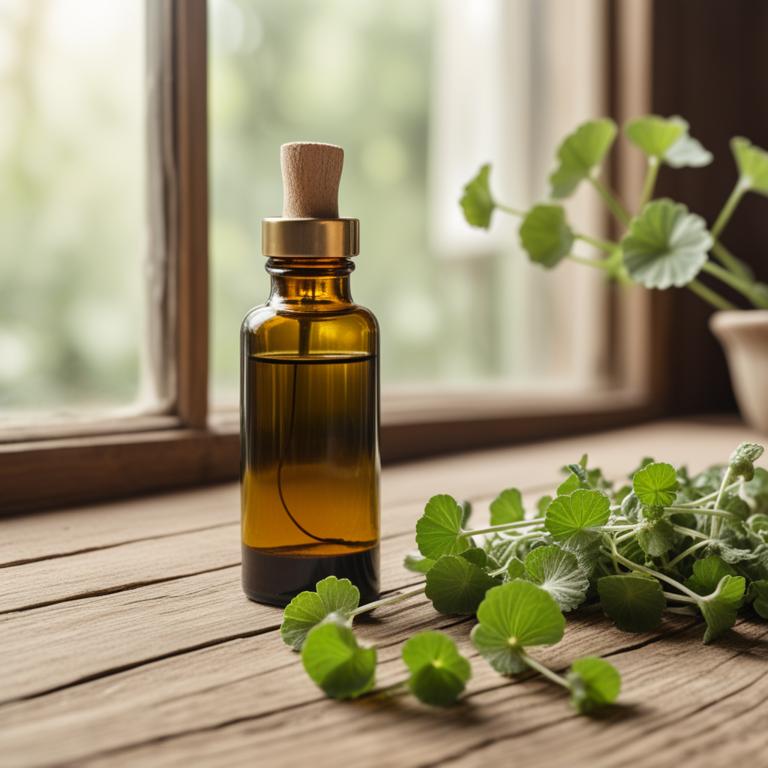
Centella asiatica tinctures have been used to treat the aging ailment, also known as geriatric syndrome, which encompasses a range of symptoms including cognitive decline, memory loss, and physical frailty.
The properties of this herbal preparation that help to treat this ailment include its antioxidant, anti-inflammatory, and neuroprotective properties, which work together to combat oxidative stress and inflammation in the body.
The bioactive constituents of Centella asiatica tinctures, such as asiatic acid, madecassic acid, and asiaticoside, have been found to have a positive effect on the brain and nervous system, promoting neuronal health and cognitive function.
Regular use of Centella asiatica tinctures has been shown to have numerous benefits, including improved memory and cognitive function, enhanced physical strength and mobility, and overall improved quality of life.
Related Study
According to "Journal of advanced pharmaceutical technology & research", Centella asiatica tinctures for aging show anti-aging potential due to its high percentage of collagenase inhibition at 78.13 ± 4.42%, suggesting it may be used as an anti-aging active ingredient for cosmetic and pharmaceutical industrials.